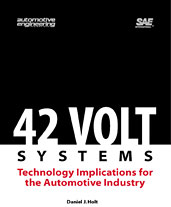Video

Spotlight on Design: Automotive Charging Infrastructure: Vehicle and Grid Integration
2016-01-30
Spotlight on Design features video interviews and case studies, focusing on technology breakthroughs, hands-on testimonials, and the importance of fundamentals. Viewers are virtually taken to industry labs and research centers to learn how design engineers solve real-life problems. These challenges include enhancing product performance, reducing cost, improving quality and safety, while decreasing environmental impact, and achieving regulatory compliance. In the episode Automotive Charging Infrastructure: Vehicle and Grid Integration (21:00), engineers from NextEnergy and an infrastructure expert from General Motors explain how technologies are rapidly converging to power electric vehicles and support the overall electric grid. This episode highlights: How the fast expansion of charging infrastructure is changing the way electric and hybrid-electric vehicles are gaining the confidence of consumers.





